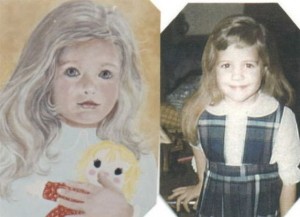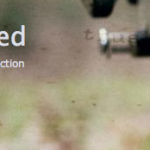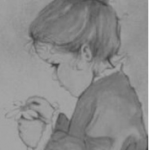In celebration of the release of Empty Arms, I’m honored to be featuring birthmother, Susan VanSleet, all this week! Like the main character in my book, Susan became pregnant when she was just a teenager and was sent away to secretly carry out her pregnancy. When her daughter was born, Susan was forced to place her for adoption and was expected to forget it ever happened. But how can a mother ever forget about her baby? Today, Susan is here to tell us about her experience and share what helped her cope through the heartbreak.
Beyond the Gray: Welcome, Susan! Can you tell us what it was like to be an unwed pregnant teenager in 1966? How did the world respond to your situation? How were you treated?
 Susan VanSleet: In 1966, the shame I silently had to deal with triggered anxiety attacks. The thought of having to tell my parents that I was pregnant was paralyzing, and it took quite some time before I found the courage to approach them. I knew they would be terribly disappointed in me. I felt such remorse for having tarnished the family name. At that particular time, families sought council from clergy members. Our parish priest advised that I be “sent away” to an unwed mothers’ home. We actually toured a facility that was quite remote from my hometown. I remember dreading the day of the tour. The “home” appeared to be filled with sad-eyed, swollen-bellied teenage girls longing for kindness. I was so frightened at the thought of having to join them. Fortunately, a maternal aunt who resided three states away agreed to take me in.
Susan VanSleet: In 1966, the shame I silently had to deal with triggered anxiety attacks. The thought of having to tell my parents that I was pregnant was paralyzing, and it took quite some time before I found the courage to approach them. I knew they would be terribly disappointed in me. I felt such remorse for having tarnished the family name. At that particular time, families sought council from clergy members. Our parish priest advised that I be “sent away” to an unwed mothers’ home. We actually toured a facility that was quite remote from my hometown. I remember dreading the day of the tour. The “home” appeared to be filled with sad-eyed, swollen-bellied teenage girls longing for kindness. I was so frightened at the thought of having to join them. Fortunately, a maternal aunt who resided three states away agreed to take me in.
I avoided “the world” as much as possible. There were, however, looks of disgust thrown my way at every doctor’s visit. Receptionists, nurses and patients alike whispered to one another. I would work on my correspondence courses in order to avoid eye contact in that setting. When my aunt and I would go shopping or out for lunch, I kept my head down. I also turned my class ring over to “prove” that I was not a single pregnant girl. I was stuck in a lie.
My aunt treated me with kindness and admittedly did not like the woman who was counseling me. The caseworker showed little emotion and when she did, it was to admonish me for a wrongdoing. My doctor was quite nice, but gave me little information about the birthing experience. He was more interested in keeping me healthy so there would be a healthy, adoptable child for the pre-selected couple that was patiently waiting.
BTG: What was it like to be cut off from your friends and family during this difficult time?
SVS: It was lonely. My aunt was a working, single woman and was away from 9-5, Monday through Friday. During the period of confinement, the “rules” were very clear: I was not to have contact with my boyfriend or friends, there were limits placed on phone calls to my parents, and worst of all, I could no longer talk to my sister. I spent the balance of my days cooped up in the apartment. Most days were hot and muggy, yet I feared stepping outside of my temporary dwelling. I listened to music. I sometimes danced across the living room floor holding my belly and felt the “kicks” of joy within. A treadle sewing machine was available to me, and each day after my class assignments were completed, I would put that stitching machine to task. I sewed maternity tops and expandable matching shorts. Looking back, I do not know how I coped.
BTG: During your stay at your aunt’s house you were given painting supplies to occupy your time. What did you paint?
SVS: My aunt gave me a wonderful opportunity. She realized I was very lonely and also knew I was a budding artist. In her mind, painting would be the best way to occupy my time. With gifts of charcoal, oil paints, brushes, and canvas. I began sketching. Soon after I was transforming my sketches into figure studies.
BTG: What do you see when you look at those paintings today?
SVS: Today, when I look at the artwork from that episode of my life, I see shame, sadness, and confusion oddly depicted in a serene manner. Those very paintings were a means of transferring, to canvas, my innermost feelings at that time.
BTG: You continued painting after you relinquished your daughter. How did your paintings change over time? How did painting help you deal with losing your daughter?
SVS: My artwork sustained me. It was a means of channeling my feelings …a way to speak the unspoken. Little by little, I continued painting portraits of a little girl who grew up on canvas. That girl was “Mary” …my daughter, placed for adoption in 1966. I painted the pretty blonde, blue-eyed girl from toddler to young adult. The last painting of Mary shows no face but rather an image of a young woman walking away. That piece was created in 1984 when she would have been eighteen years old. Surreal as the thought may have been at that time, I believed in my heart, that someday, we would meet as women.
BTG: You reunited with your daughter in 1993. How did your paintings change after your reunion? What do you paint today?
SVS: My daughter and I met, at her request, in 1993. That reconnection was extremely emotional, cathartic and liberating for me. From that day forward, I no longer needed to purge my longing, secreted desire to see and embrace her. I stepped away from portrait-painting for nearly two decades following our meeting, but have recently felt energized to create again.
I am currently working on a series of family portraits.
BTG: What has painting meant to you throughout your life?
SVS: I believe tangible art is an undeniable vehicle of communication and that my ability to share feelings on canvas, both in sadness and joy, is a gift.
***
Here is one Susan’s paintings that shows how she imagined her daughter, compared to a photograph of what her daughter actually looked…
Check back all this week for a beautiful series of poems and paintings that Susan created as a reflection on her experience…






Thank you for citing,and sharing,my work, Erika!
Thanks to YOU, Susan, for telling us about your experience and sharing your beautiful work with us. I continued to be so touched by your story.
I enjoyed reading this interview~~it offers so much insight and it will truely touch more people than you realize!
Oh, my goodness!! After reading this interview, I have tears in my eyes that are the result of so many emotions! I know Susan. I grew up in the same neighborhood she and her family lived in…. just houses away from each other. I went to school with her sons. 🙂 This family always made me smile. I can’t imagine the heartbreak of having to give your child up for adoption, but I can clearly see and understand how it broke Susan’s heart. I also understand how art was an amazing outlet for her…. a journey toward healing. In the time she’s been painting again (following almost two “silent” decades), she painted a picture of me… and shared some of the kindest words about why she was inspired to paint it. That she did this for me is an honor, and I find myself still feeling so blessed by the experience. (Thank you, Susie!) As she painted my portrait, she showed me each stage of her work along the way. I was amazed at how her work and her interpretation of what she saw in me came to LIFE! I was able to relive that moment in my life all over again because she captured it so perfectly. Susan is an incredibly gifted artist with a heart that “sees” people. Through her art, she has the ability to, literally, draw out the inner soul, thoughts, strength, or vulnerability in a person… so when you see her work, you know exactly what she’s trying to convey… and you can “feel” what the object of her work is feeling.
Bottom line for me :: I am beyond blessed to know Susan and to have had her influence in my life…. from childhood into adulthood. In being neighbors…. and because of her art. Much love to you, Susie!!